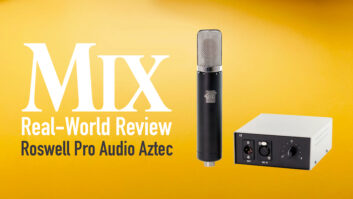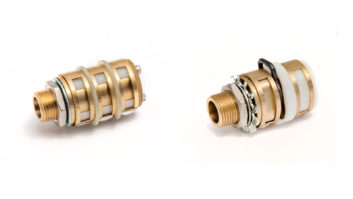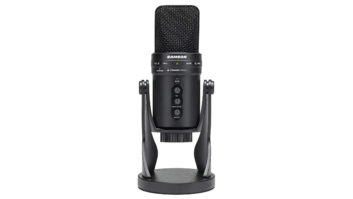In recording, you could say that the prevailing tendency is to “capture it clean and color it with plug-ins later,” or even the post-modern “capture it clean and then emulate the behaviors of the whole signal chain.” I still cherish the opportunities to capture signals with risky, stylized and colorful tones that don’t need much help from additional processors and box me right in to creatively artistic mix corners. The new Colares large-diaphragm condenser (LDC) studio microphone from Roswell Pro Audio appears to be aimed at engineers like me who want to capture personality right at the front of the recording process—or not, as the case may be; the difference amounts to just a flick of a switch.
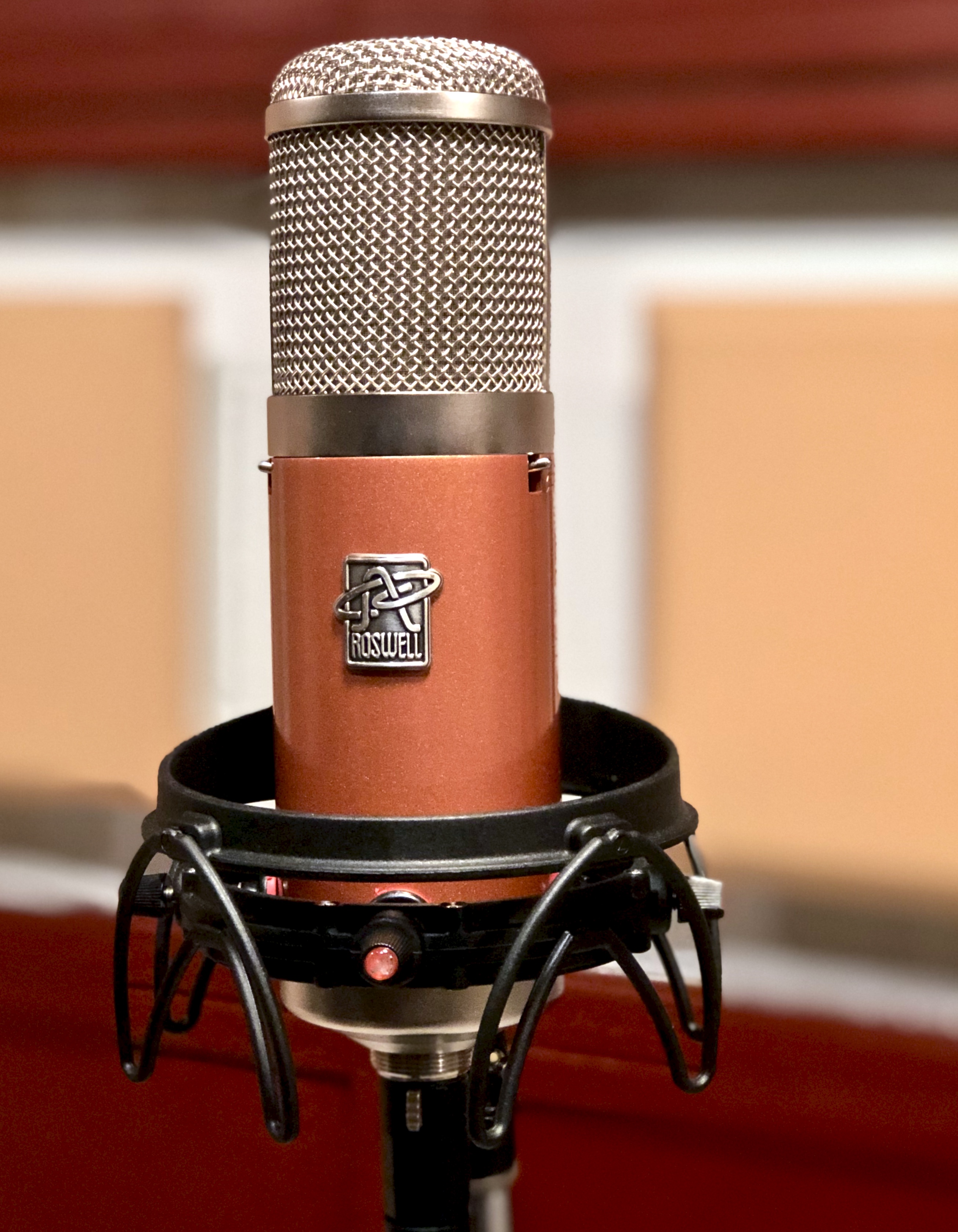
Roswell’s Matt McGlynn found inspiration for the Colares from Telefunken’s ELA M 251 and hoped to capture such detail and crisp smoothness without the drawbacks of tube-based designs. He has come up with an FET-based pressure gradient condenser with an edge-terminated 34 mm, gold-plated Mylar capsule. There’s also a NOS—new old-stock—JFET amp (“individually ‘biased’ using a custom test fixture”), top-grade resistors and capacitors, premium switches and a custom-wound Cinemag transformer at the crucial output stage to complete the path. The design is meant to increase 2nd order harmonic content, with a slightly saturated sound full of warmth and detail. Colares ships with a small flight case and a Rycote shockmount that is very nice. It holds the mic firmly without sag and is a universal design that would fit most large-body LDCs. How I wish other LDCs had as effective a shockmount.
Review: Roswell Delphos LDC Mic, by Rob Tavaglione
The Colares employs a unique pad switch that not only attenuates the level -10 dB, but also mitigates that harmonic color, reducing it by about -12 dB. The mic also has a three-position bass control switch highpass filter (HPF) that allows full deep bass extension, or two rolled-off positions. And you are likely to need such filtering from time to time, as a Colares frequency response graph shows a long, gentle bass increase starting around 125 Hz, as well as a “presence bump” at 3 or 4 kHz and a little boost centered at 10 kHz—well-chosen positions for a little emphasis, I would soon find out.
Despite ultimately a lot of versatility, Colares is marketed as a special vocal mic, so I threw it up for some male lead vocals without any hesitation. Sure enough, within seconds it was clear that this was a “vibe” mic, a “color” mic or even an “attitude” mic. Not that it is distorted, or fuzzy or murky at all; rather, it is saturated, more so with a little grit than growl, with a lot more detail and finesse than you’d expect from these inadequate descriptions. It’s like a tube mic with abundant high end that’s crisp but silky, not unlike a C12. There’s this big bottom end, too, and ample proximity effect, so there’s top and bottom on this voluptuous figure.
I found this little bit of hype and color to benefit primarily lead vocals, as I could use a mic with less personality on my backing vocals and get nice contrast. A click of the HPF switch was helpful when I needed to mic very close for intimacy but without proximity effect. I found that the pad was indeed helpful to quickly eliminate saturation tendencies and clean things up without having to switch mics—not a problem as long as you’ve got another 10 dB of clean gain available at your mic pre.
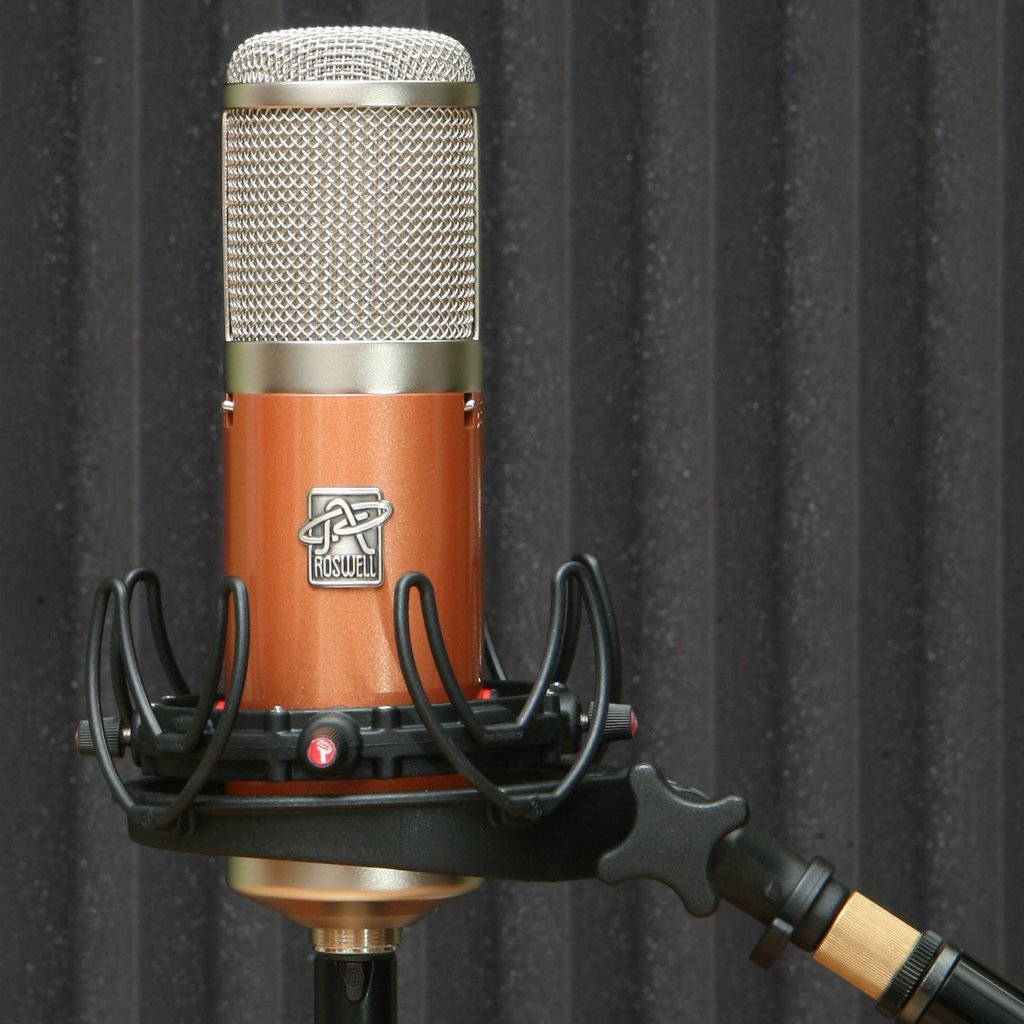
The pad became the big artistic decision to make with the Colares when tracking instruments. Take drums, for example: I got good results with the Colares as a third overhead without any filtering, with the pad either in or out. (It provided slightly edgy and lively tones with the pad out, and normal, quick, clean FET response with it in.) With acoustic guitars, I found myself tracking with the pad out and a touch of color, as it wasn’t so over-the-top as to ruin a nice, natural guitar tone. Acoustic bass worked pretty well (paired up with a passive ribbon, too) with no filter and no pad. Guitar amps required the pad, as you might guess, so the resultant sound was crisp, clean, usual solid-state LDC stuff.
During months of testing, I tried the Colares on a wide range of sources and found its versatility outdone only by its ability to specialize. I know that sounds a bit inarticulate, so allow me to explain. Yes, the Colares can be exceptionally colorful and “character driven,” and that’s what makes it special—but with its unique pad, it can be an entirely different, neutral and “invisible” mic, which makes it really valuable. Its ability to express both personalities well makes the Colares a secret weapon mic, one worthy of being toted around in that travel case, able to handle just about anything thrown at it. It’s $1,259 direct from Roswell and worth every penny.
Roswell Audio • www.roswellproaudio.com

